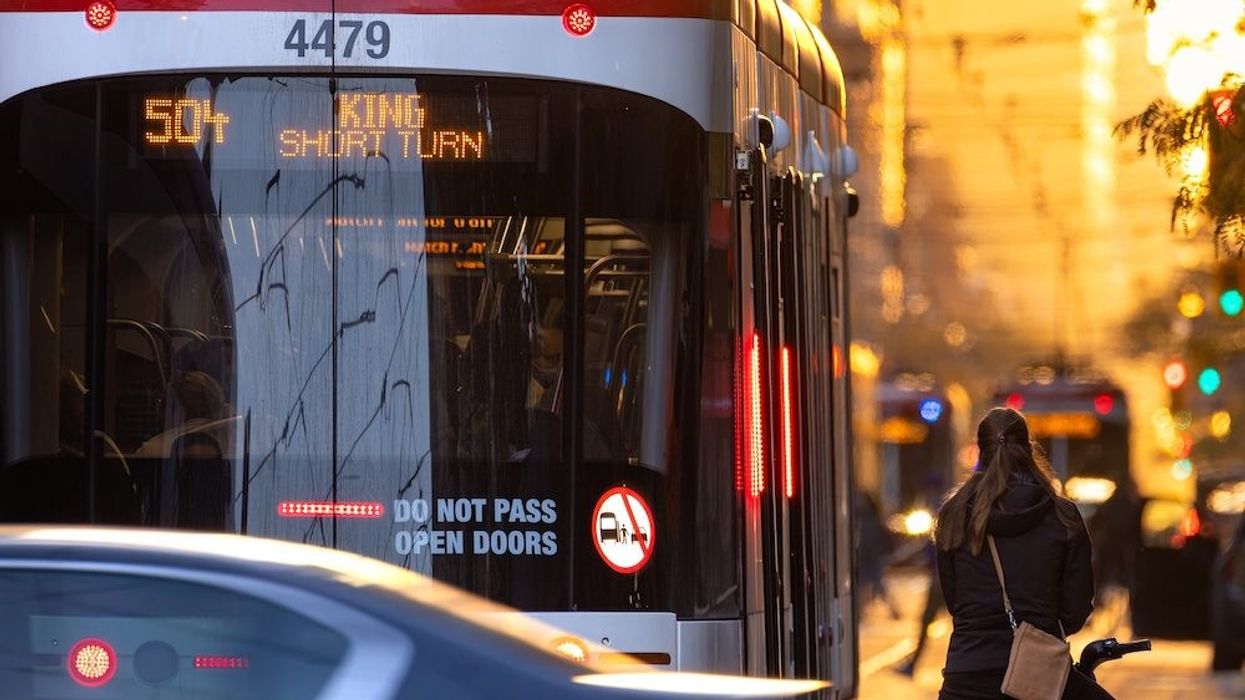For a nation that wouldn’t exist but for transportation -- in Canada’s case, the transcontinental railway -- the failure to grasp the importance of mobility and access verges on tragedy.
That failure has left cities across the country closer than ever to the point of no return. Urban transit networks can no longer cope with the demands of getting people where they want to go safely, reliably, and efficiently. Because public transit has been chronically under-funded, most Canadians have no choice but to drive. As a result, congestion here ranks among the worst in North America.
What Canada, its municipalities, and provinces have forgotten is that cities are only as successful as their transit allows. That’s why Toronto has seen the moment of its greatness flicker. And though that doesn’t seem to bother anyone at City Hall, it should. Toronto transit has gone from bad to worse. The TTC, once a source of civic pride, is now a civic frustration.
It’s not unusual these days to spend 20 or even 25 minutes waiting for a streetcar or bus. Whether it’s the city’s busiest route, the 504 King Street line, or the equally awful 506 College route, service is appalling. In North York and Scarborough, it’s even worse. For commuters, public transit is a terrible way to start to the day, and a terrible way to end it. No wonder ridership is down.
The Red Rocket has crashed and burned. Who wouldn’t choose the warmth and comfort of their own private vehicle over the pain of public transit?
No wonder car culture remains official policy across Canada, let alone Toronto. Though opposition grows ever louder, it goes largely unheard at the highest political levels. In a rare outbreak of enlightenment in 2017, the same 504 streetcar line was given priority status. But the good intentions have been crushed by lack of enforcement and maintenance. As for bike lanes, they remain a network awaiting completion.
Meanwhile, roads and highways are gridlocked as never before. And yet, Toronto and Ontario’s commitment to cars and trucks, expressways and bypasses, is as firm as it was in the 1950s, ‘60s and ‘70s when the Gardiner Expressway appeared to make sense. This, and the sprawl it has enabled, mean mass transit is not a viable option. Spaces are too vast, densities too low.
Sadly, Ontario hasn’t just fumbled transit; it has succeeded in turning what should be good news -- the construction of new subway lines -- into an endless cascade of disasters. Building the Ontario Line, for example, will mean replacing the busy 501 Queen streetcar with shuttle buses for almost two years. If that weren’t enough, the intersection of Queen and Yonge will be closed for five years while Metrolinx, the secretive provincial transit agency, builds a new Ontario Line station.
Then there’s the Eglinton Crosstown, under construction since 2010. And though expected to begin service several years ago, it has been delayed again and again. The most recent postponement came just months ago. And we still don’t know when it will open.
The Chinese, who can build a hospital in 10 days, could have pulled it off in mere months. Beset by confusion and mismanagement, Metrolinx never fails to blow through budgets and deadlines with abandon. Protected by a premier who apparently sees public transit as a form of civic punishment -- no pain, no gain -- it has wreaked havoc on every corner of the city.
It didn’t help that one of the last moves of our recently departed chief magistrate, John Tory, was to cut the Toronto Transit Commission service by almost 10%, raise fares 10 cents, and increase the number of security guards. Such a wrong-headed response reveals the degree to which our municipal masters and their provincial overseers have lost touch with reality. Needless to say, most of them rarely use the TTC. They prefer to stay a safe distance from the transit-dependent masses.
Though poor administration is a massive problem, politics make things positively poisonous. Transit has always been political, of course, but since that day in March, 2012, when then Toronto Mayor Rob Ford told city council that residents want “subways, subways, subways,” planners have been replaced by politicians.
The $3.2B subway extension from Downsview to Vaughan Metropolitan Centre was a prime example. The line, which opened in 2017, was conceived as a vote-grabber. Yet its five stations are among the least used on the TTC.
Meanwhile, whole swaths of the downtown core where demand is highest are still awaiting the arrival of the metro. To be fair, the Ontario Line, which will run 16.5 km from the Ontario Science Centre to Exhibition Place, is expected to fill a gap first identified in a 1910 study. But even before the heavy digging has started, Metrolinx has left a trail of disgruntled residents from Osgoode Hall and Moss Park to Leslieville and Thorncliffe Park.
Given the agency’s heavy-handed practices, things are unlikely to improve anytime soon. Oh, yes, already the opening of the Ontario Line has been delayed from 2027 to 2031 while costs have ballooned from $11B to $19B.
Toronto’s mobility issues may be the stuff of urban myth, but fiascos in Ottawa and Edmonton are also case studies in how not to build transit.
Despite what our political masters say; EVs are not the answer. They might well wreak less environmental havoc, but will do nothing to alleviate congestion. Only transit – mass, mini or micro -- can do that. The sooner Canada gets on board, the sooner we’ll get where we’re going.





















